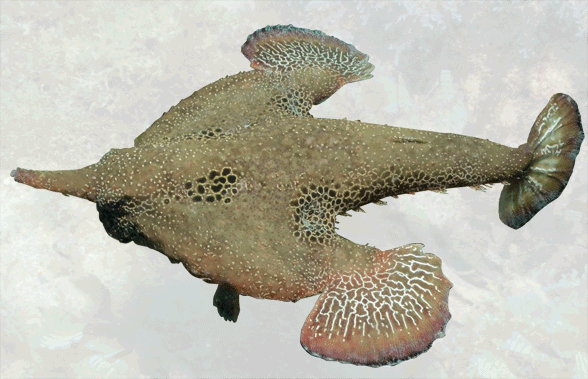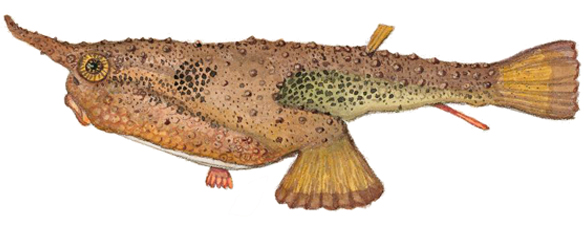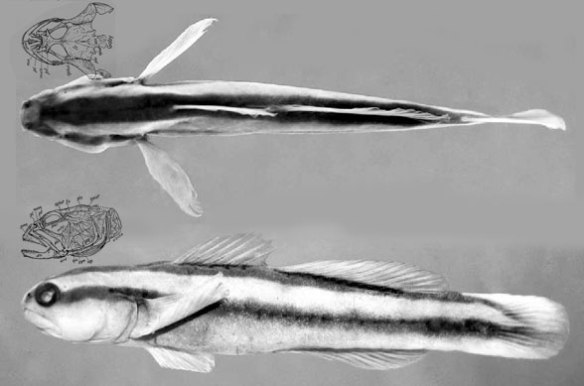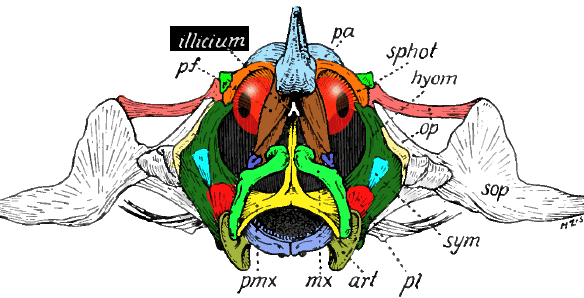Updated January 4, 2023
turns out Ogcocephalus nests in the LRT between anglers + frogfish and more plesiomorphic gobies (thanks to neotony). This hypothesis needs further study.
According to Wikipedia,
“Ogcocephalidae is a family of anglerfish specifically adapted for a benthic lifestyle of crawling about on the seafloor.”
By contrast,
in the large reptile tree (LRT, 1836+ taxa) Ogcocephalus (Figs. 1–3), nests with Elacatinus (Figs. 4,5), the neon goby… and these taxa are outgroups to anglerfish, like Lophius. Anglerfish and frogfish developed similar camouflages and lures by convergence.
Derouen et al. 2015 reported,
“the position of Ogcocephalidae within Lophiiformes, remain[s] poorly understood with previous studies showing conflicting, and poorly resolved results.”
That’s what happens
with taxon exclusion. No gobies were in their analysis. Derouen et al. 2015 also employed molecules in their analysis, which, as we know my now, is a hit-or-miss method at best. Too many false positives arise following DNA deep time studies. Better to stick with traits and expand that taxon list as in the LRT. Then your results will be well understood and resolved.
Ogcocephalus vespertilio
(Linneaus 1758; 30cm; Figs. 1–3) is the extant Brazilian batfish or seadevil. Gregory 1933 labeled a parietal over the cranium (Fig. 3), but that is the posterior frontal, which also extends anteriorly beyond the short rostrum. In this regard batfish are similar to related frogfish (genus: Antennarius). No nasals, postparietals or lacrimals are present in this clade of bony ray-fin fish. The pelvis is anterior to the pectoral girdle. The gill openings are circular and located in the ‘arm pits’.
The batfish is a nocturnal fish
that covers itself with sand and preys on seafloor invertebrates. The elongate rostrum, formed by the frontal, can be used as a digging tool. A small lure-like process emerges from the naris, but it is not a visual lure, but a chemical/odor organ, sensing the chemistry of buried prey.

During daylight hours,
batfish remain stationary, relying on their camouflage (Fig. 1) to remain unobserved. That’s the opposite of colorful, shiny neon gobies.
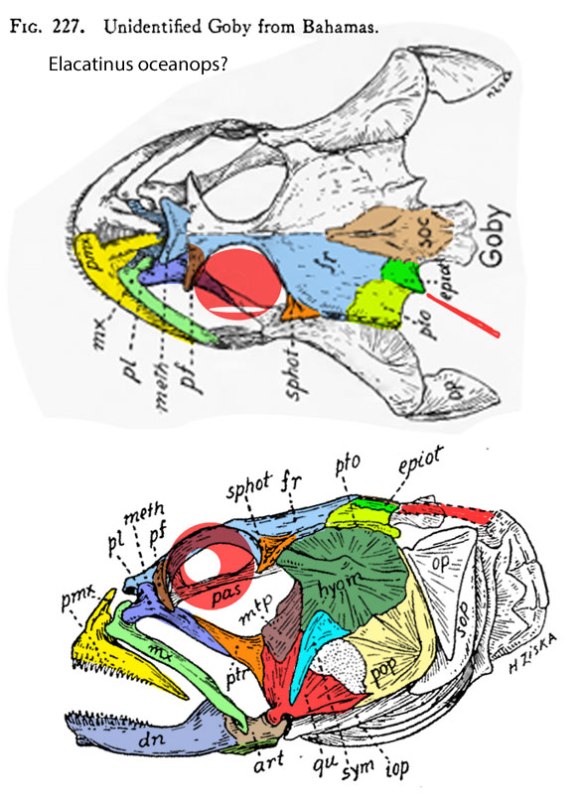
Elacatinus oceanops
(Jordan 1904; 5cm) is the extant neon goby from Bahamas coral, common in the aquarium trade. It nests here with the mudskipper, angler and batfish in the LRT. These three taxa have different niches, color patterns and sizes, but share a last common ancestor with similar skeletal structure. Note the small anterior process of the frontal in this goby, then compare it with the batfish (Fig. 3).
Relating Ogcocephalus to gobies
rather than anglers appears to be a novel hypothesis of interrelationships. If not, please send the citation so it can be promoted here.
The published study by Derouen et al. 2015,
despite their considerable talents, turned out to be a complete waste of time, money and energy because it was not based on a valid phylogenetic context due to taxon exclusion. When amateurs can say this about professional studies, so often, it’s time to revamp the whole academic process. Universities: Let’s first concentrate on the overall view of vertebrate diversity, as documented in the LRT, then go back to focus on the smaller studies that draw our individual attention. Stop teaching myth and tradition. Get your family tree in order!
References
Derouen V et al. 2015. Examining evolutionary relationships and shifts in depth preferences in batfishes (Lophiiformes: Ogcocephalidae). Molecular Phylogenetics and Evolution 84: 27-33.
Linnaeus C 1758. Systema naturæ per regna tria naturæ, secundum classes, ordines, genera, species, cum characteribus, differentiis, synonymis, locis. Tomus I. Editio decima, reformata.
Here’s a funny and informative short video on YouTube:
https://en.wikipedia.org/wiki/Ogcocephalidae
wiki/Ogcocephalus_vespertilio

